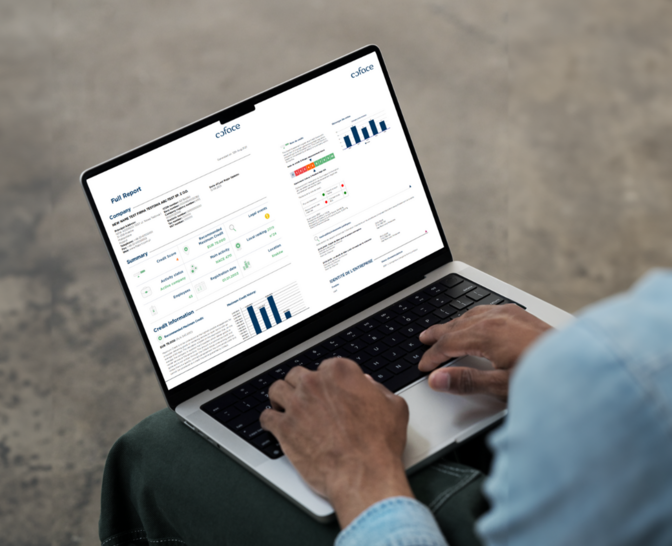Identify new commercial partners
Our in-depth company analysis helps you identify and onboard new commercial partners.
Assess current or potential business partners through Coface Business Information
Coface underwriters assess the creditworthiness of customers, suppliers, prospects and other companies which you may do business. With our Credit Opinion you receive:
An exclusive solution that leverages the same credit risk underwriting we use to manage our business and make more than 10,000 credit decisions each day.
Access to Coface unique data specializing in risk analysis with a global scope.
A holistic view on the risk profile of your chosen company and its country's risk context.
The agility to improve decisions with updated and automated insights.
Our Score gives you a unique global assessment that evaluates a company's capacity to honor its financial commitments within the next 12 months. Companies are assigned a standardized score that ranges from 0 (Insolvency) to 10 (Very High Financial Stability).
With a globally unified scoring system, you can ensure consistency and standardization in the scoring and predictive insights derived from our data.
Thanks to our continuously updated database, you can obtain additional information on a specific company to determine overall creditworthiness and payment behavior with our Business Reports.
A snapshot report offers a synthetic view of your business partners, complemented by Coface's unique payment experience, with instant delivery for companies in over 60 countries.
A full report provides comprehensive and in-depth information on your business partners. Alongside Coface's unique payment experience, it serves as an ideal product for credit and risk management. Full reports are available in all 195 countries, with delivery times ranging from instant to nine days, depending on the selected countries.
Portfolio Insights provides you with in-depth information about the risk of your counterparties, including debtors, buyers, and clients. These insights are cross-referenced with Coface’s expert macro-economic assessments.
Whether you need a one-page summary or a thorough and deep analysis, Portfolio Insights provides you with all the information you need to steer your risk. Information is also presented with engaging visuals and a dedicated dashboard.
Welcome to the future of informed decision-making! Explore the power of iCON by Coface.
• Transform data into actionable insights, offering real-time information, credit scores, economic analyses, and more.
• Elevate your business strategy, manage risks effectively, and stay ahead of the competition.
• Discover a world of possibilities with 'iCON by Coface' – where information becomes your competitive advantage.
Get access to all your data by integrating our Business Information tool with your existing applications through an API connection.
Through our API connection, you'll reduce the need for multiple tools and improve your company’s productivity.
Online services for customers and brokers
Business Information
Access the business insights you need to manage credit risks across your entire business-partner portfolio and make strategic decisions with confidence.
Broker Portal
Platform dedicated to brokers for monitoring your business and managing your customer portfolio (in all countries where legally available).
Customer Portal - CofaNet
Coface online platform for managing your trade receivables. Full monitoring of your risks. Direct access to all tools according to your contracts.
Innovative and digital solutions
API Portal
Stop juggling between software applications. Explore Coface API Catalogue and Integrated Solutions for Icon by Coface and trade credit insurance.






